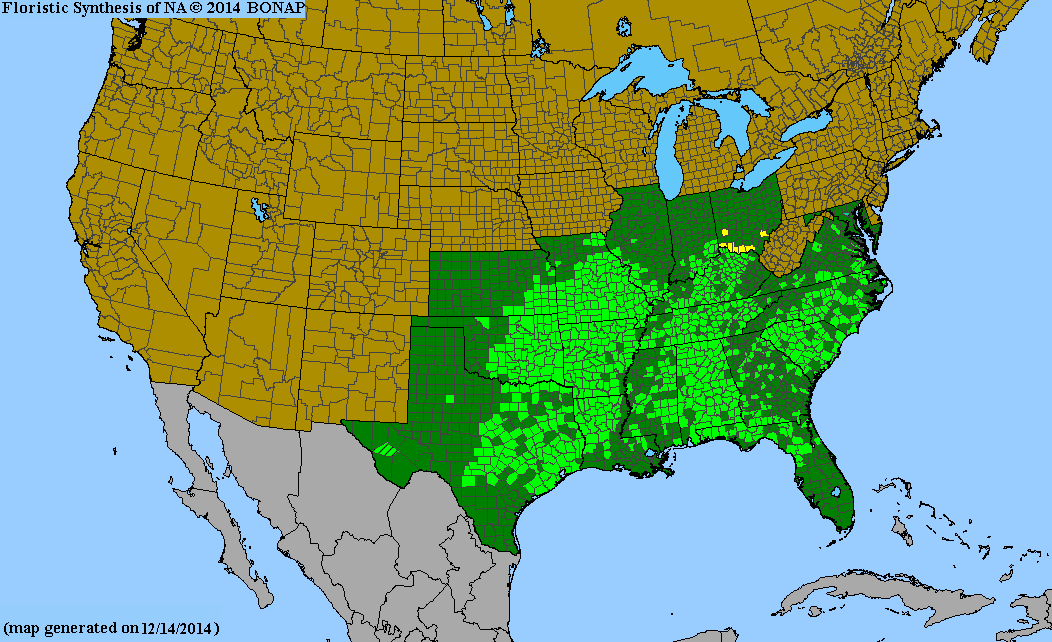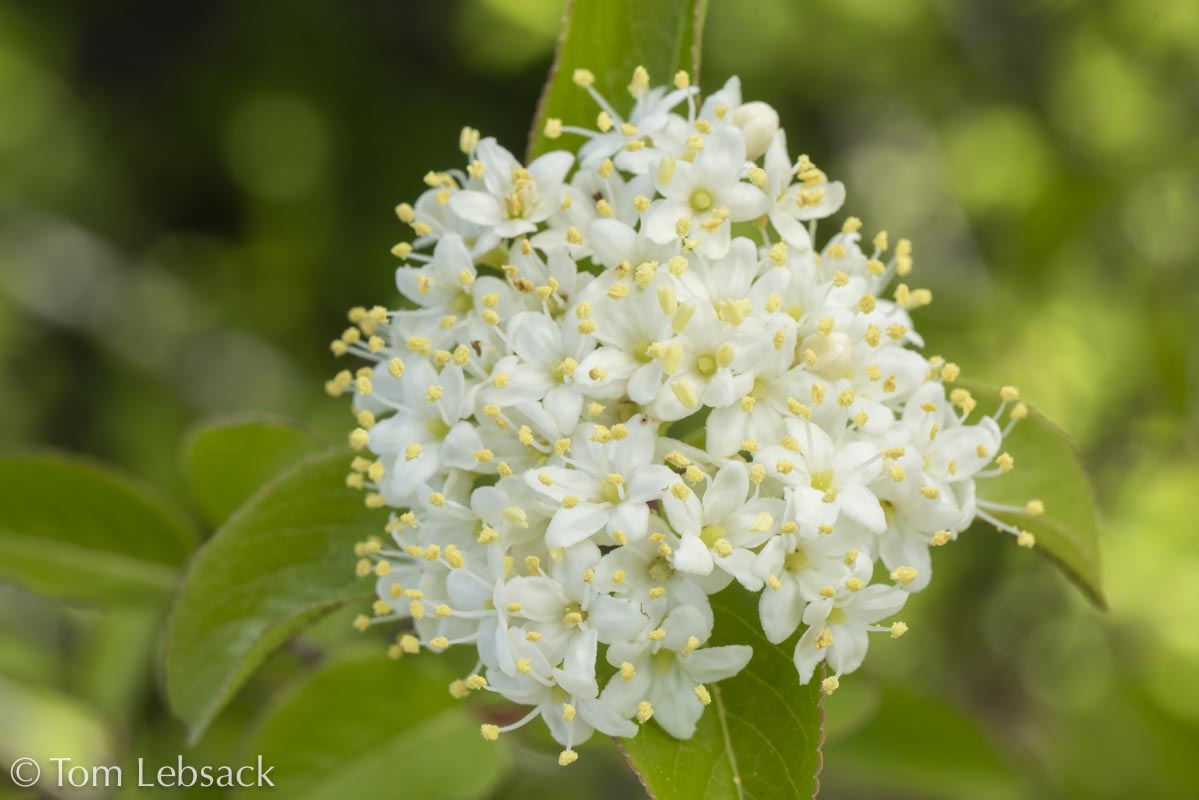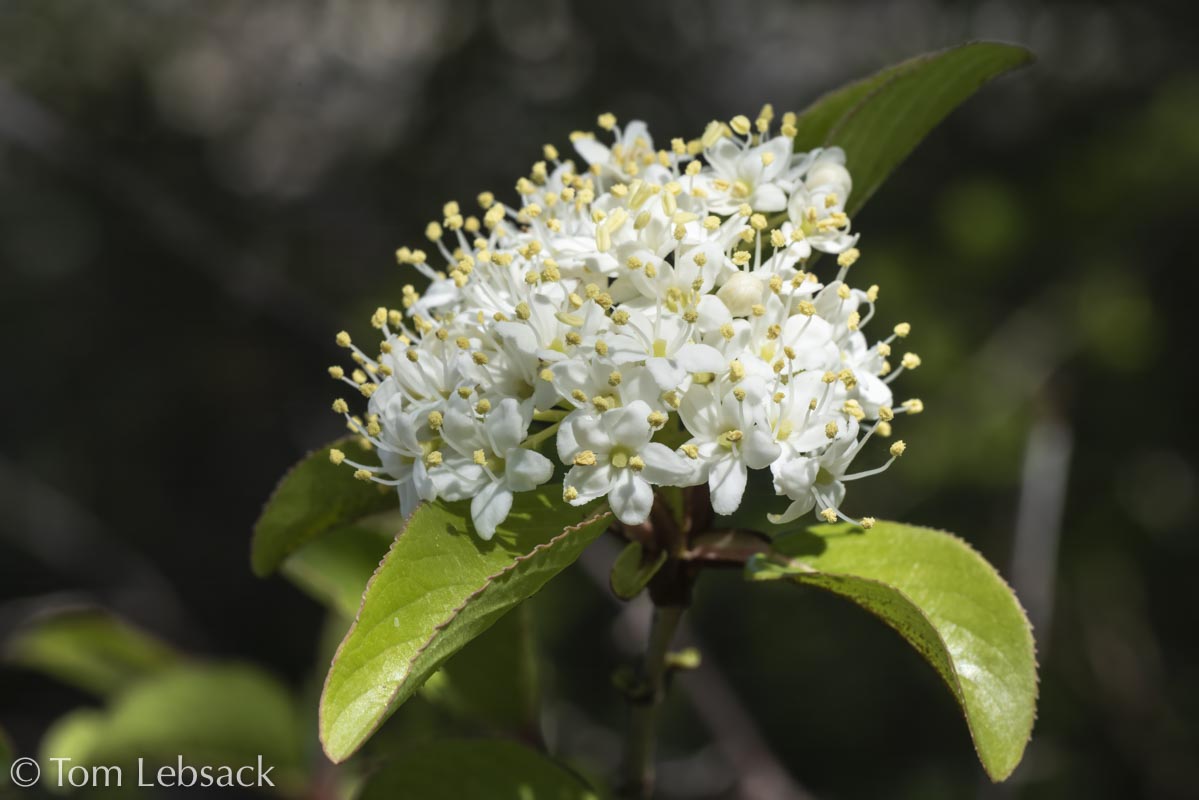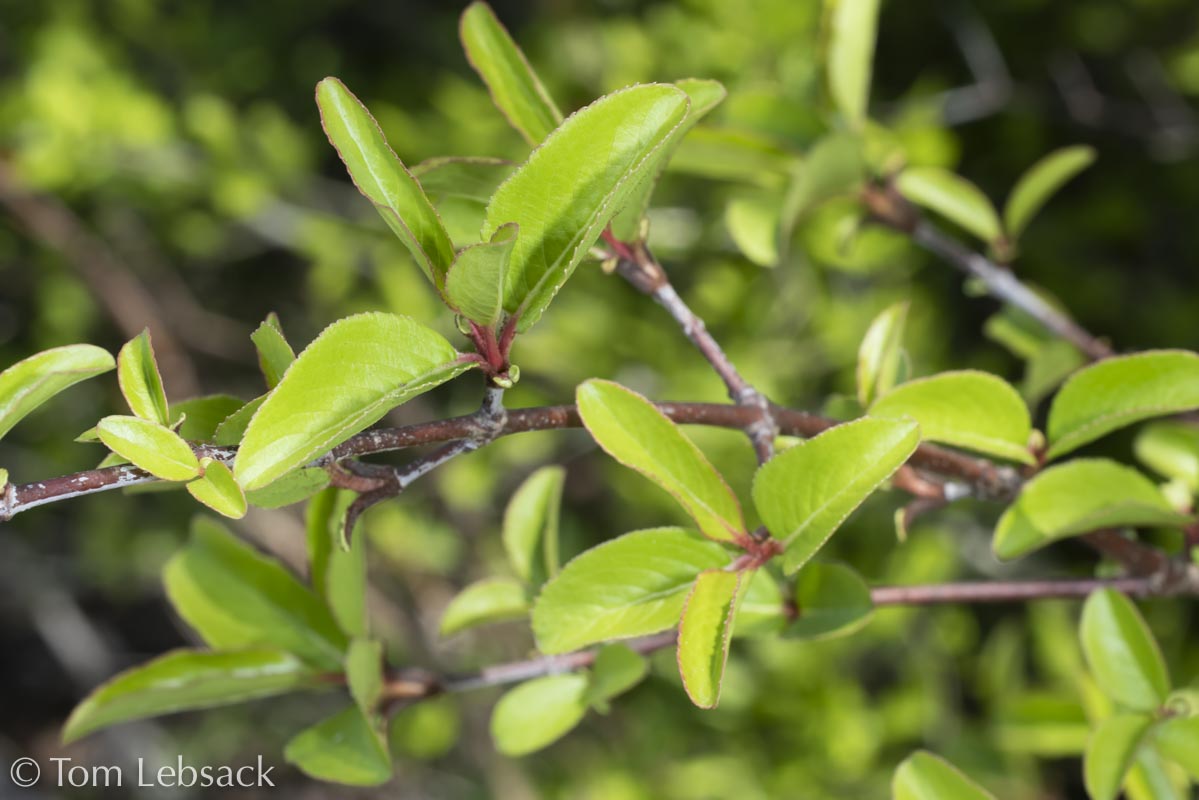Texas Wildbuds
Viburnum rufidulum
(Rusty Blackhaw)
| Scientific Name | Viburnum rufidulum | USDA PLANTS Symbol | VIRU |
| Common Name | Rusty Blackhaw, Rusty Viburnum | ITIS Taxonomic Serial No. | 35274 |
| Family | Adoxaceae (Moschatel) | SEINet Reference |
Click Here |
| Description | Habitat: Dry rocky, calcareous, sandy or clay soils; open woods and thickets, forest margins, streambanks, canyons. Plant: Deciduous shrub or small tree 4 to 12 feet tall (20 ft. or more with ideal soil conditions); checkered, dark bark; twigs reddish brown with a thin light gray coating. Leaves: Pairs of petiolate, leaves 1 to 3 inches long on short spurs, elliptic, obovate or oblanceolate with rounded tips; serrulate, rust-colored edges; very fine rust-colored hairs on petioles and main vein on the undersides. Inflorescence: Large cymes up to 4 inches wide with many small creamy-white flowers each 1/4 to 3/8-inch wide; 5 petals and 5 protruding stamens with yellow anthers. Bloom Period: March to May. References: "Wildflowers of the Texas Hill Country" by Marshall Enquist, "Manual of the Vascular Plants of Texas" by Correll and Johnston and Wildflower Center. |
BONAP Distribution Map Map Color Key |
Texas Status: Native |
Banner photo of Castilleja indivisa and Lupinus ssp. taken along FM 1323 north of Johnson City, Blanco County
© Tom Lebsack 2025
Every attempt is made to provide accurate, up-to-date, and relevant information, but the completeness or accuracy of any information presented on this website cannot be guaranteed. I use authoritative references to insure high standards of accuracy and review and update the information frequently.


